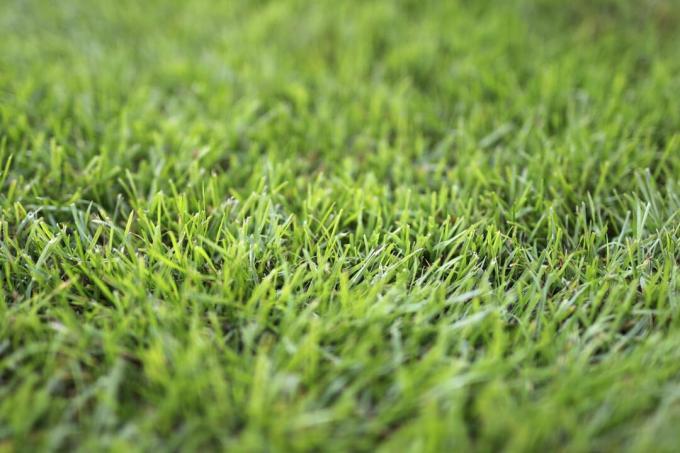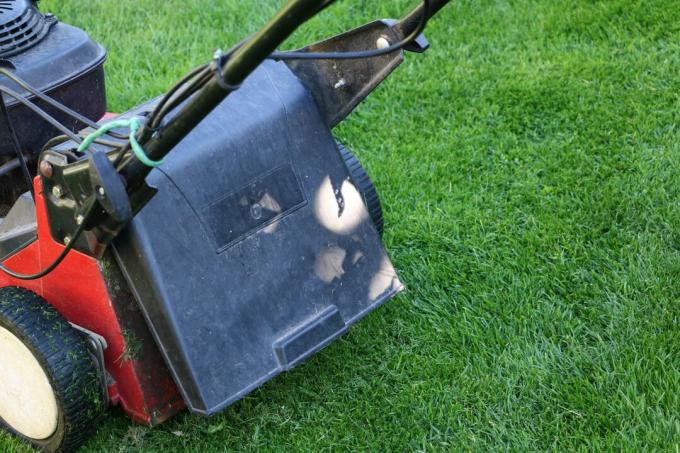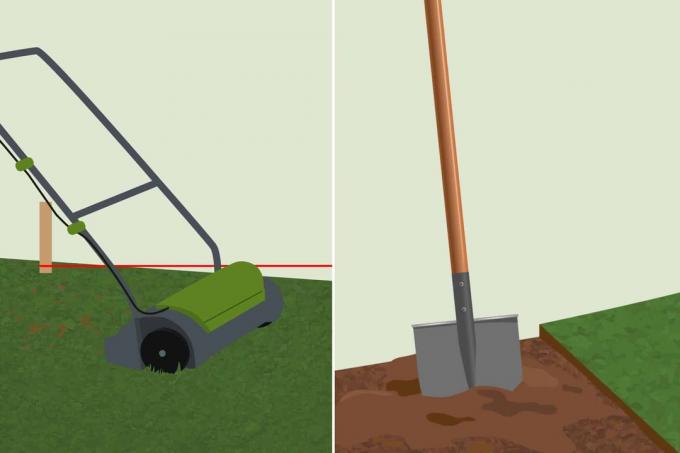

Table of contents
- Weed Killer: Time
- Application of weed killers
- When to mow?
Weed killers must be used in the right way. This guarantees that you will not accidentally damage the lawn or neutralize the effect of the agent.
Weed Killer: Time
Herbicides are biological or chemical herbicides that work when they come into contact with the plant. As soon as the agent gets on the leaves, they are destroyed (corrosive agents) or the Active ingredients passed into the plant (systemic herbicides), which then together with their roots enters In the garden, mainly caustic agents are found. They must dry into the leaves after application to achieve the desired effect. Since they are easily washable, the right time must be chosen, otherwise the effect is significantly lower and you repeat the entire procedure for a satisfactory result would have to.
The right date is determined by the following points:
- mid-May to June
- no more risk of frost
- Time of day: afternoon, evening
- Temperature: 8°C to 12°C
- mow four days before
- avoid dry soil

You should also make sure that there is no risk of rain for a period of about eight hours after the treatment. For this reason, check the weather report regularly. The remedy itself does not affect the timing. It therefore does not matter which one is selected. In addition, you should note that weed killers should not be used on lawns that are less than two years old. They could also kill the grasses, as they are not yet sufficiently established and are much more sensitive.
A notice:
Never use herbicides in midsummer as the grasses can suffer from severe drought stress. The warm temperatures ensure that the agents can cause burns.
Application of weed killers
Once the treatment day has come, you need to use the funds in the right way to get the best effect. Depending on the weed killer, you use different tools that make spreading easier. If you want to treat small lawns or lawns right next to flower beds, use your watering can. They prevent accidental treatment of your flowering and vegetable plants, which could also suffer from the agents. A knapsack sprayer treats larger areas that are not directly next to your beds. Although you distribute the agent sharply at the edges, the weed killers could still end up in your beds via possible winds, cause permanent damage and destroy your harvest. Granules can be easily spread by hand or with a spreader.
Apply the agent evenly to the lawn while observing the following safety instructions:
- Observe the dosage according to the manufacturer's instructions
- Keep animals or children away
- wear gloves
- wear a face mask and safety goggles if necessary
- do not spray against the wind
- not on closed surfaces (eg. B. stone terraces).
- Herbicides could enter drains
- Do not walk on the lawn for 24 hours
Tip:
If you do not want to use weed killers and do not have a large lawn, you can remove the greens manually. A weed puller is ideal for this, with which you can pull the individual weeds out of the ground together with the roots.
When to mow?

One of the most important points after using the weed killer is when you can start mowing again. You should never tackle the lawn with the lawn mower immediately after treatment, otherwise you will not be able to take effect. In this case, you would just be wasting money on the funds unnecessarily. However, mowing is necessary to remove the dead plant remains so that the grasses no longer have to compete for water, light and nutrients. Mowing will take place no sooner than 48 hours after treatment, although you can wait longer.
 garden editorial
garden editorial I write about everything that interests me in my garden.
Learn more about lawn care

Leveling out unevenness in the lawn: this is how it works
Unevenness in the lawn is annoying and poses a danger to gardeners, playing children and pets. There are a number of methods that can be used to level the lawn. We present them to you in our guide.

Leveling the lawn: how to smooth uneven surfaces
Dents and holes in the lawn are unsightly. We will show you step by step how to smooth uneven areas in the lawn again.

Algae in the garden | Lawn is slippery: what to do?
Algae love rainy days. Can the water seep badly into the ground, even better! The green, slippery mass is not only not a pretty sight, but also a danger for the lawn. Only those who act preventively and correctly in acute cases can avoid permanent damage.

Fighting fungi in the lawn | 10 tips against fungal infestation
Mushrooms in the lawn are not uncommon but annoying and sometimes even dangerous. This is especially true if the garden or green space is also used by pets and children. Here we will show you how to combat fungal infestation.

Aerate the lawn | Before or after mowing?
Sun, water, fertilizer and air are necessary for the lawn to grow. If the lawn does not get enough air, it cannot grow properly. We clarify when the right time to ventilate the lawn is.

Mulching with lawn clippings: 13 things to consider
Keeping the lawn short is a must for many hobby gardeners. However, if the lawn mower does not have a mulching function so that the grass clippings can remain on the lawn, the question arises as to where to put the waste. Because the compost heap is not a good solution here.



